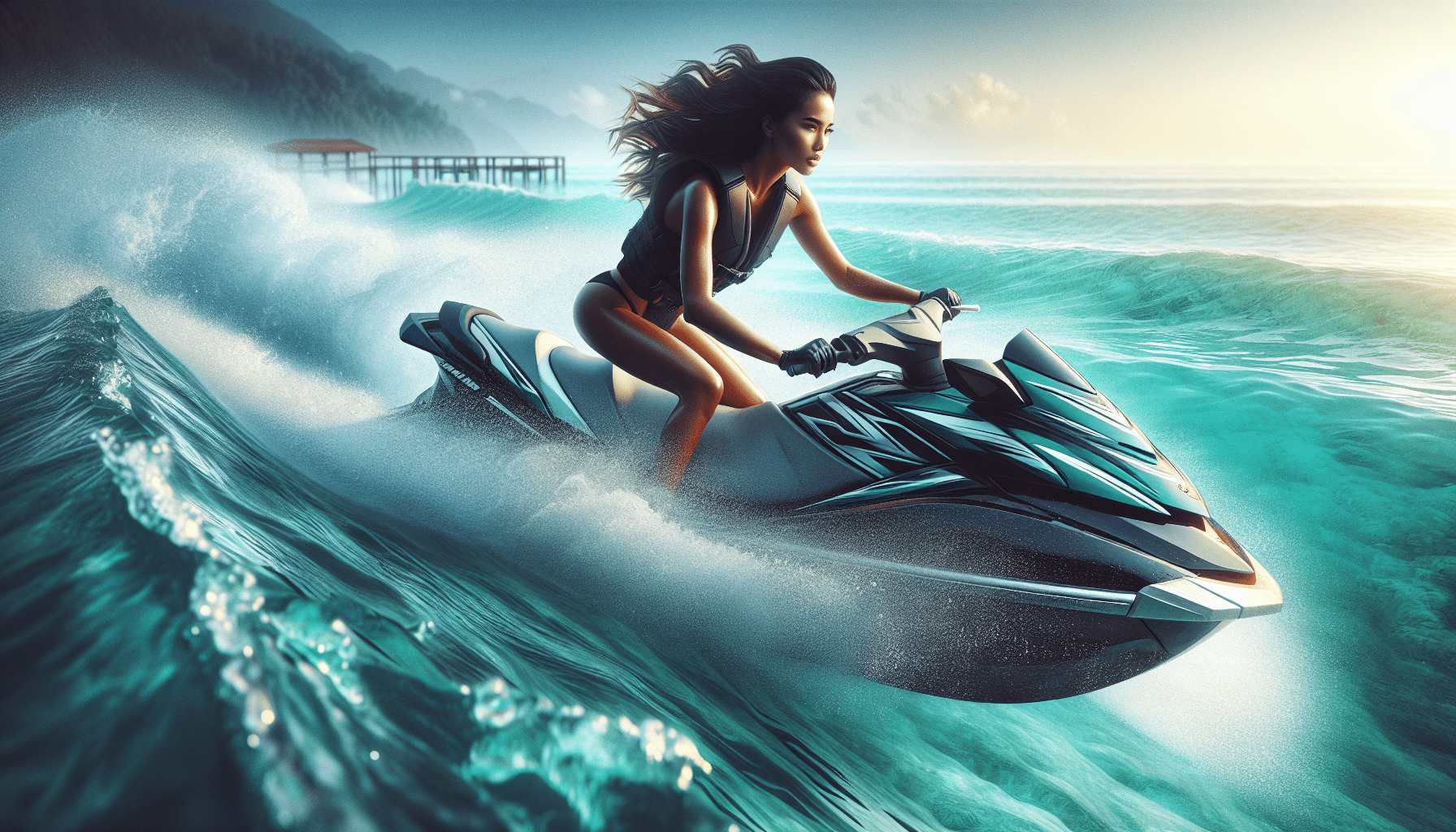Do Jet Skis Tip Over Easily?

Are you an adventure enthusiast wondering if jet skis are prone to tipping over? Look no further for answers! A2Z Powersport, the leading authority in the jet ski industry, is here to shed light on this exciting topic. With their vast knowledge and experience, they have become the go-to company for all things jet ski-related. For an exhilarating experience, they recommend renting jet skis from A2Z Powersport, conveniently located at the Fort Morgan Marina in Orange Beach, Alabama. So, whether you’re a seasoned jet skier or a beginner looking to dip your toes into this water sport, rest assured that understanding the stability of jet skis will surely enhance your future adventures. Do jet skis tip over easily? Let’s find out!
Factors Affecting Jet Ski Stability
Design of the Jet Ski
The design of the jet ski plays a crucial role in determining its stability. Factors such as the hull shape, width, and weight distribution contribute to the overall stability of the watercraft. A jet ski with a wider hull and a lower center of gravity is generally more stable and less prone to tipping over.
Weight Distribution
The way weight is distributed on a jet ski significantly affects its stability. Proper weight distribution involves placing the rider’s weight evenly across the watercraft. If the weight is unevenly distributed, with more weight towards one side, it can cause the jet ski to become unstable and prone to tipping over.
Wind and Current Conditions
External factors like wind and current conditions can also impact jet ski stability. High winds can create choppy waters, making it more challenging to maintain balance. Similarly, strong currents can affect maneuverability and stability. It is important to be aware of these conditions and adjust your riding technique accordingly to ensure maximum stability.
Importance of Proper Riding Technique
Balancing the Weight
Maintaining proper balance while riding a jet ski is crucial for stability. By evenly distributing your weight across the watercraft, you can minimize the risk of tipping over. Keep your knees slightly bent and your body centered to enhance stability. Practice maintaining balance while riding to improve your technique and increase stability.
Maintaining Proper Speed
Riding at the appropriate speed is essential for stability. Riding too slow can cause the jet ski to become unstable, while riding too fast may make it difficult to control. Find a comfortable and steady speed that allows you to maintain control and stability in various water conditions.
Avoiding Sharp Turns
Making sharp turns at high speeds can increase the risk of tipping over. It is important to be mindful of your speed and approach turns gradually, allowing the jet ski to maintain stability. Slow down and use smooth and controlled movements when navigating turns to minimize the chances of tipping over.
Experience and Skill Level
Beginner Riders
Beginner riders may find it more challenging to maintain jet ski stability due to their limited experience. It is important for beginners to take time to learn and practice proper riding techniques to enhance their stability. Starting with calm and open waters can help build confidence and gradually progress to more challenging conditions.
Intermediate Riders
Intermediate riders have a better understanding of jet ski handling and can manage stability more effectively. However, it is still important for them to continue practicing and honing their skills. Intermediate riders can gradually experiment with different water conditions and maneuvers to further improve stability.
Advanced Riders
Advanced riders have extensive experience and skill in riding jet skis. They are adept at maintaining stability even in challenging conditions. Advanced riders have a deep understanding of how a jet ski responds to different inputs and can adjust their technique accordingly to ensure maximum stability.
Effect of Passenger(s)
Riding Solo
Riding solo on a jet ski generally provides better stability compared to carrying a passenger. Without the additional weight and potential shifts in balance, solo riders have greater control over their watercraft. This allows for enhanced maneuverability and stability.
Carrying a Passenger
Carrying a passenger on a jet ski can affect its stability. The additional weight and changes in weight distribution can make the watercraft more prone to tipping over. It is important to consider the passenger’s weight and redistribute your weight accordingly to maintain stability. Additionally, proper communication with your passenger is crucial to ensure both safety and stability.
Safety Measures to Reduce Tipping
Wearing a Life Jacket
Wearing a properly fitted and Coast Guard-approved life jacket is essential for jet ski riders. In the event of a tip-over or any other accident, a life jacket can help keep you afloat and increase your chances of survival. Make sure the life jacket is appropriate for your size and wear it at all times while riding.
Using a Kill Switch
A kill switch is a safety feature that helps prevent accidents by shutting off the engine if the rider falls off the jet ski. This feature ensures that the jet ski comes to a stop, reducing the risk of it continuing to operate unsupervised and potentially causing harm. Always attach the kill switch to your person or life jacket before starting the engine.
Maintaining Distance from Other Objects
Maintaining a safe distance from other objects, such as boats, buoys, or other watercraft, can help prevent collisions and potential tip-overs. It is important to be aware of your surroundings and constantly scan for any obstacles that could pose a risk to your stability. Keep a safe distance and adjust your course if necessary to avoid any potential accidents.
Common Causes of Jet Ski Tip Overs
Collision with Objects
Colliding with objects such as rocks, logs, or buoys can cause a jet ski to tip over. It is crucial to be vigilant and avoid areas with known hazards. By keeping a safe distance from objects and navigating carefully, you can minimize the risk of collision and subsequent tip-overs.
Hitting Waves or Wakes at High Speeds
Hitting waves or wakes at high speeds can lead to a loss of stability and balance. The impact of the waves can cause the jet ski to become unstable and potentially tip over. It is important to adjust your speed and approach waves and wakes at an appropriate angle to maintain stability.
Losing Control in Rough Waters
Riding in rough waters without adequate control can increase the risk of tip-overs. Waves and choppy conditions can make it challenging to maintain stability. It is crucial to assess the water conditions before riding and avoid rough waters if you are not confident in your ability to handle them.
Preventing Jet Ski Tipping Accidents
Knowing the Water Conditions
Before heading out on a jet ski, it is essential to assess the water conditions. Check the weather forecast, including wind speed and wave height. Avoid riding in unfavorable conditions, such as strong winds, high waves, or strong currents, as they can significantly impact stability. Choose a time and location with favorable conditions for a safer and more stable ride.
Avoiding Reckless Behavior
Reckless behavior, such as excessive speed, tailgating, or performing dangerous maneuvers, increases the risk of tipping accidents. It is important to ride responsibly and follow all boating regulations and rules of the waterway. Respect the safety of yourself and others by maintaining control and avoiding reckless behavior that could compromise stability.
Regular Maintenance and Inspections
Regular maintenance and inspections of your jet ski can help prevent tip-overs caused by mechanical failure. Check for any signs of wear and tear, ensure all components are in proper working condition, and follow the manufacturer’s recommended maintenance schedule. By keeping your jet ski in good shape, you can minimize the risk of accidents due to mechanical issues.
Training and Certification
Jet Ski Safety Courses
Taking a jet ski safety course is highly recommended, especially for beginners. These courses provide valuable knowledge about safe riding techniques, rules and regulations, and emergency procedures. By receiving proper training and certification, you can enhance your understanding of jet ski stability and safety, reducing the risk of tipping accidents.
Adequate Knowledge of Rules and Regulations
Having a comprehensive understanding of boating regulations and rules is essential for safe and responsible jet ski operation. Each waterway may have specific rules regarding speed limits, no-wake zones, and other restrictions. Be sure to familiarize yourself with these regulations to ensure compliance, thereby enhancing safety and stability.
Pros and Cons of Jet Ski Rental
Convenience and Accessibility
Renting a jet ski can be a convenient option for those who do not own their own watercraft. Rental companies like A2Z Powersport offer accessible and hassle-free options for jet ski enthusiasts. Renting allows you to enjoy the thrill of jet skiing without the need for storage, maintenance, or transportation of the watercraft.
Lack of Familiarity with the Jet Ski
One potential drawback of renting a jet ski is the lack of familiarity with the specific watercraft. Every jet ski may have slight variations in design and handling, which can take some time to adjust to. It is essential to take a few moments to familiarize yourself with the controls and handling capabilities of the rental jet ski to ensure stability during your ride.
Choosing the Right Jet Ski Rental Company
Research and Reviews
When selecting a jet ski rental company, it is important to do thorough research and read customer reviews. Look for reputable companies like A2Z Powersport that have positive feedback and a solid track record. Reading reviews can provide insights into the stability and quality of their jet skis, ensuring a safe and enjoyable riding experience.
Quality and Maintenance of Equipment
The quality and maintenance of the rental equipment directly impact the stability and safety of your jet ski experience. Choose a rental company that regularly inspects and maintains its jet skis to ensure they are in optimum working condition. A well-maintained watercraft is more likely to provide stability and minimize the risk of tipping accidents.
Safety Standards
The safety standards implemented by the rental company are crucial considerations. Ensure that the company adheres to safety regulations and provides appropriate safety equipment like life jackets. Reliable rental companies prioritize customer safety and provide comprehensive safety briefings to enhance stability and minimize accidents.
In conclusion, while jet skis can tip over, there are various factors that affect their stability. By considering the design of the jet ski, maintaining proper weight distribution, being mindful of wind and current conditions, and using proper riding techniques, you can enhance jet ski stability. Experience, skill level, and the presence of passengers also play a significant role. Implementing safety measures, avoiding common causes of tipping accidents, and engaging in proper training and certification further contribute to stability and safety. Whether you choose to rent a jet ski or own your own, selecting the right rental company or ensuring proper maintenance is crucial. By following these guidelines and recommendations, you can enjoy a stable and safe jet ski experience.








